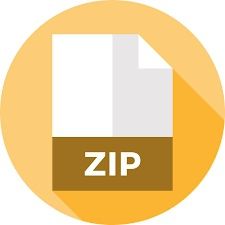$29
CS 118 : Homework 7
CS 118 : Homework 7
Problem 1
Suppose that the NAT-capable router has a single public address 128.97.27.37 which it uses for all communication with hosts that are not part of the private network. The private network used is subnet 10.0/16.
The router multiplexes its public IP address(es) as needed and keeps track of the multiplexing in a NAT
translation table.
Assume that the router multiplexes the public address using ports starting from 8000 and then increments
the port number by one for each new entry. For example, if a host behind the router with address and port
10.0.0.5:5000 sends a message to an external server 8.8.8.8:53, then the entry in the NAT table would
be filled in as below.
Table 1: NAT Translation Table
IP:port within private network IP:port outside private network
10.0.0.5:5000 128.97.27.37:8000
. . . . . .
The next time the router will use port 8001 to establish a new connection and so on.
(a) Draw the resulting NAT Translation Table at the end of the following message exchanges following the
format of Table 1 (including the original entry):
(1) 10.0.0.6:5000 sends a message to 172.217.11.78:80
(2) 10.0.0.10:6000 sends a message to 204.79.197.200:80
(3) 10.0.1.101:6001 sends a message to 206.190.36.45:80
(4) 10.0.0.10:6000 sends a message to 204.79.197.200:80
(5) 10.0.1.101:6001 sends a message to 172.217.11.78:80
(6) 10.0.0.7:7000 sends a message to 63.245.215.20:80
(7) 204.79.197.200:80 sends a message to 128.97.27.37:8002
(8) 204.79.197.200:80 sends a message to 128.97.27.37:8003
(b) For simplicity, let us assume that message format is MSG <Sender, Receiver. In that case, if a host
in the private network with IP address and port 10.0.0.5:5000 sends a message to 132.239.8.45:80.
Then the message received at the router and leaving at the router would look as follows:
Message Received from Host: MSG <10.0.0.5:5000, 132.239.8.45:80
Message Sent from Router: MSG <128.97.27.37:8000, 132.239.8.45:80
List the messages, in the same format shown above, received from the host at the router and the
message sent from the router for the following messages:
(1) 10.0.0.6:5000 sends a message to 172.217.11.78:80
(2) 10.0.0.10:6000 sends a message to 204.79.197.200:80
Assume the entries from your NAT Translation Table in (a) to do this.
Problem 1 continued on next page. . . Page 1 of 6
CS 118 Spring 2020 : Homework 7
Write your solution to Problem 1 in this box
Page 2 of 6
CS 118 Spring 2020 : Homework 7
Problem 2
Answer the following questions regrading to IP.
(a) Suppose Host A receives an IP datagram. How does the network layer in Host A know it should pass
the segment (that is, the payload of the datagram) to TCP rather than to UDP or to something else?
(b) Can a host have more than one IP address? Justify your answer briefly.
(c) How does Skype work between two hosts which are behind two different NAT boxes?
(d) Do you think NAT is still needed if IPv6 is globally deployed?
Write your solution to Problem 2 in this box
Page 3 of 6
CS 118 Spring 2020 : Homework 7
Problem 3
Consider the following network. With the indicated link costs, use Dijkstra’s shortest-path algorithm to
compute the shortest path from z to all network nodes. Show how the algorithm works by computing a table
similar to the table in chapter 5 lecture slide 12 (Dijkstra’s Algorithm: example).
Note: When there is a tie, you should select the node with order t u v w x y. For example,
when u and w appear to have the same cost, you should add u into N0
in your next iteration.
Write your solution to Problem 3 in this table.
Step N0 D(t),p(t) D(u),p(u) D(v),p(v) D(w),p(w) D(x),p(x) D(y),p(y)
0
1
2
3
4
5
6
Page 4 of 6
CS 118 Spring 2020 : Homework 7
Problem 4
Consider the network shown below. Suppose AS3 and AS2 are running OSPF for their intra-AS routing
protocol. Suppose AS1 and AS4 are running RIP for their intra-AS routing protocol. Suppose eBGP and
iBGP are used for the inter-AS routing protocol. Initially suppose there is no physical link between AS2
and AS4.
At some time T, the prefix x appears in AS4, adjacent to the router 4a. From which routing protocol
(OSPF, RIP, eBGP, or iBGP):
(a) Router 3c learns about prefix x?
(b) Router 3a learns about prefix x?
(c) Router 1c learns about prefix x?
(d) Router 1d learns about prefix x?
Write your solution to Problem 4 in this box
Page 5 of 6
CS 118 Spring 2020 : Homework 7
Problem 5
Consider the following topology. The cost metric of a link denotes the one-way propagation delay on the
link in msec (assuming the delays are symmetric). The two ISPs ISP 1 and ISP 2 are peers. CIDR is used
for addressing and BGP is used for inter-domain routing. Assume that both ISPs always try to enforce hotpotato routing above all other routing policies. What is the one-way propagation delay between Customer
1 and Customer 2? Is the routing between two customers symmetric or asymmetric?
Exchange Point
(Public Peering Location)
J
H
I
G
A
C
D
E
F
B
Customer 1
Customer 2
ISP 2
ISP 1
5
5
20
5
10
15
5
10
35 20
5
10
5
Write your solution to Problem 5 in this box
Page 6 of 6


